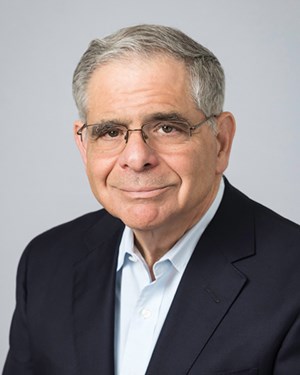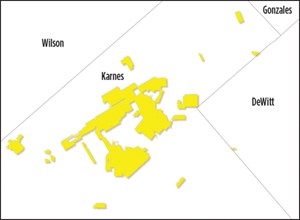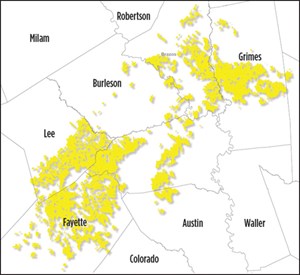Former Oxy chief assembles new Texas-based powerhouse operator
In an interview with World Oil Editor Kurt Abraham and Associate Editor Emily Querubin, Chazen and Michael MacDougall, managing partner of TPG Pace Energy, explained how the deal came about, and how the new firm will operate.
World Oil (WO): What is the background to this deal?
Michael MacDougall (MM): We are TPG, a leading global investment firm. Energy is one of our five core areas for investment focus. When I sat down with Steve Chazen (Fig. 1), after he stepped down from Oxy a year-and-a-half ago, the first question was, “What do you want to do next?” Now, the average guy, who has run a really large, multi-billion dollar company, usually says, “I’m done being public.” And Steve actually said the exact opposite. Which is, “What I want to do next is build a large company. Probably larger than you’d want to put in your fund. I want to be a $10 billion-plus company.”
So, in partnership with Steve Chazen, we formed TPG Pace Energy and took it public, in an initial public offering (IPO) in May 2017. We raised $650 million of equity in the IPO. We visited Steve’s top 30 investors before doing that, so they knew what we were up to. The vast majority said, “When you find a deal, come and tell us, and we’d like to support you.” We spent the second half of 2017 looking at about 15 assets. Very few met our criteria for really high-quality assets, preferably oily, that either give you quick pay-backs on new wells or give you good margins. This large-scale Enervest asset, anchored by a position in Karnes County (Fig. 2), has great paybacks, great margins, 70% or more true oil, and a real chance to use that cash flow to drive organic growth and also make attractive acquisitions. And then we added the Giddings asset, which we paid a small premium plus PDP value for, but it gives you 300,000 net acres, where they are taking technology from Karnes, and they’re deploying it in the Austin chalk at Giddings. You get very attractive payback—six to nine months.
WO: How did the deal finally get done with Enervest?
MM: Steve has known the Enervest founder, John Walker, for many years. So, we sat down with the Enervest folks, and, and said, how can we help you? And John said, “I’d like to take some of my best assets public. Could you help me?” So we spent last fall going through these assets with Steve. Out of their large portfolio, we settled on the Karnes and Giddings acreage. We then spent two months, with their technical folks, building a model that fits Steve’s strategy, so that we can take it public. We also met with a handful of Steve’s longtime investors, who committed $355 million on top of our $650 million, to the transaction. So we basically have the equivalent of a $1-billion IPO. And the sellers taking back a little less than a billion-and-a-half of stock. This creates a large-scale company, at about five times cash flow, with a 10% cash flow yield. And the chance to grow close to 15% per year organically and generate a lot of cash. We’d like to double the production base organically, in the next five years, and generate $1 billion in additional cash.
WO: Was acreage in the Eagle Ford one of your original goals?
Steve Chazen (SC): No. We said, first, I want good markets for the product. So you eliminate the Northeast and Rockies gas and North Dakota. You worry a bit about the Delaware basin—it may be okay now, but you see the threat out there. So, you take that screen and you say, “well, I looked at a lot of gas opportunities.” I’ve been a bear about gas for maybe 30 years, for a variety of reasons. What you see is lots of gas. Some guy talks about oil plays, but they’ve got 1/3 oil and 2/3 gas. So, I wanted as much black oil as possible. And then, this opportunity came up, where we had somebody who wanted to take their assets public. The seller is a true believer, both in the assets and oil price. So that was sort of how the deal came together. I also had looked in the SCOOP/STACK, in Oklahoma, and at some gas in the Haynesville.
WO: Who are the other senior management members of Magnolia?
MM: Upon closing, Steve will be joined by his long-time colleague and business partner, Christopher Stavros, who will serve as CFO. Most recently, Chris served as CFO of Occidental Petroleum Corporation. Steve and Chris worked closely with each other for many years at Oxy, and we are excited to bring them back together in this new enterprise. They share the philosophy of generating attractive full-cycle returns while maintaining a strong balance sheet with low leverage. Magnolia will also maintain a majority independent Board of Directors. Additionally, Magnolia will leverage its relationship with TPG to call upon the firm’s extensive investment and operational expertise, unique sector focus, value-oriented approach and global network.
WO: What swung you to the Eagle Ford, as opposed to other places, including the Permian?
SC: Oil and paybacks. If you look at the Eagle Ford break-evens, in Karnes, they are at $30/bbl. So, I wasn’t really worried about product price change. Just looking at the production in a short period of time, you get payback effectively.
MM: The real difference is that gas/oil mix. If you look at that lower Eagle Ford well, it is 75% oil. That Delaware well is 45% oil. So the difference between 75% oil and 45% oil is noticeable.
SC: So, you put it in dollars, and you can see how it works. The returns are better. Think how much less capital-intensive this [Eagle Ford] stuff has to be than where you’ve got two-year payback.
MM: If your payback is 20 months and you drill a well, it’s two years later until you get your money back. Whereas, if you drill a well that has a six-month payback, it actually pays back that year, and you can use that cash flow to pay for more drilling that year.
SC: So, even in Giddings, we are running free cash on an annual basis. I’m only spending 60% of my money drilling, and I’m keeping 40%. I could make acquisitions with that. I could buy stock, whatever. But, I won’t have to raise more money.
WO: In recent years, we haven’t seen many companies interested in that area around Giddings.
SC: Only three companies have enough acreage. This one, Wildhorse and GeoSouthern, and none of them have any money. Down in GeoSouthern’s acreage, they’re in an oil area, and you can see that production is less, but there are real-high oil percentages. Now there’s only a few wells, and there’s a reason why—there’s a fault that runs there. Years ago—I’ve been working this area for 35 or 40 years—we’d look for the natural fractures, and we drilled from them and got oil.
WO: That was before technology breakthroughs—now you can go back.
SC: So, what you do is look where the fractures aren’t, rather than where they were, because if you go where the fractures are, the frac fluid will leak into them. You won’t get anything. You run seismic to find where to drill, but it’s the opposite of the old way. Then, you put in a massive frac. There’s lots of oil-in-place, so you should get good wells.
WO: So, how will the relationship between you and Enervest work?
SC: They’re a contract operator. The operator is us—we own it all. They have a division in South Texas that drills wells, and they do a good job of it, as shown by their IPs, compared to other operators. They’re top-quartile. Rather than try to build the whole team all over again, we’re just using them.
MM: They have a hundred people, who are dedicated to their South Texas division, one of five divisions. This is basically a basin exit for them. So, they have 50 people in the field and 50 corporate technical people. And they’ve offered those folks to us on a long-term arrangement. And they’ve agreed not to compete with us for the next four years in the basin. And beyond that, they’ve offered to have their back office help us with Giddings. Enervest, as a whole, has 36,000 wells and about $7 billion of assets—we’re buying a third of Enervest, the biggest division. So, it’s good for them, and it’s good for us.
WO: In a year’s time, what do you think your activity level might be?
SC: Modest. About 50% to 60% of our cashflow will be used for drilling. In the Karnes area, the goal is to extract every barrel that you can, but not as fast as you can. All of this is held by production, and there’s no hurry. We want to extract every barrel. The economics are great, and they work at almost any oil price.
MM: We have given public guidance of just under three rigs this year, and four rigs next year.
SC: And that’s two (Karnes) and two (Giddings). Giddings is an emerging play, and we won’t put more into it than the cash flow. We have a business model—it’s not a geologic model. There has to be free cash, and I’m only going to spend 60% at the most. And that’s what we tell investors.
WO: So, you’re going to call the company Magnolia Oil and Gas.
SC: Yes. We researched the name. Many years ago, there was a Magnolia Petroleum. The Sealy family of Galveston founded it, and they had trucks and gas stations, and some production and drilling. And I think they were acquired by Socony and later Mobil. But it wasn’t called Magnolia Oil and Gas.
WO: At this stage in your life, you could have easily said, “Adios, have a great day.” But you took the other approach. What motivated you to do that?
SC: I like public investors. I learn from investors. That’s the real motivation. When you’re young, you imagine that if you had some money, you would play golf and travel to Europe or something. But I’ve traveled to Europe in my life, and I don’t play golf. No, I was built for work—I enjoy work. I will have more influence. At Oxy, I made a billion-dollar acquisition. While I did approve the acquisition, I didn’t actually turn the dials. Now, if I buy something for $100 million, I get to turn the dials. I like to turn dials. ![]()





